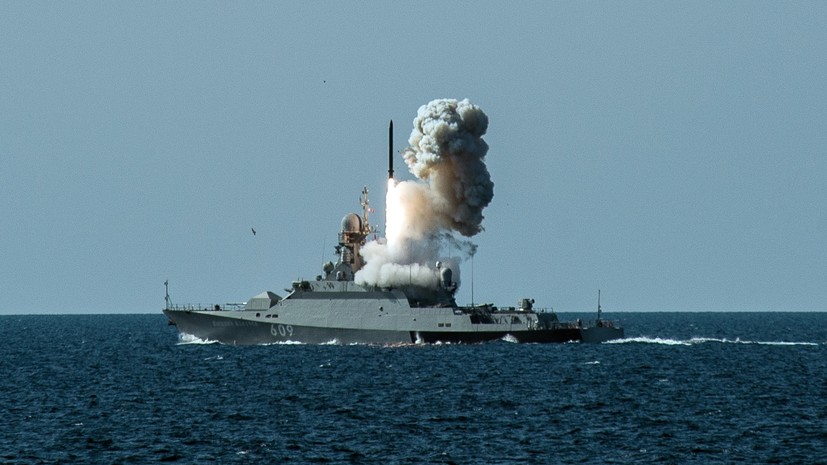Since the beginning of the special military operation in Ukraine, frigates, small missile ships and submarines of the Black Sea Fleet have struck with Kalibr missiles at more than 180 critical facilities of the Armed Forces of Ukraine. This was stated by the commander of the fleet, Vice Admiral Viktor Sokolov.
He noted that the forces and troops of the Black Sea Fleet have been taking part in the special operation from the first hours of its start. According to him, the fleet performs combat and special tasks related to both missile strikes and issues of ensuring the security of Russian territory.
"The main targets were radar stations of air defense systems, points of temporary deployment of units of the Armed Forces of Ukraine, warehouses of rocket and artillery weapons, oil depots, fuel depots, air bases, railway stations," Sokolov said about the Kalibr strikes in an interview on the occasion of the 240th anniversary of the Black Sea Fleet in an interview with Krasnaya Zvezda.
The fleet commander clarified that at the same time, the main elements of air defense systems and illumination of the enemy's surface situation in the northwestern part of the Black Sea and the Sea of Azov were destroyed by air strikes.
According to the Vice Admiral, along with this, the coastal missile systems "Bastion" and "Ball" of the coastal missile and artillery forces of the fleet were actively used. First of all, they hit enemy command posts, airfields, positional areas of air defense units, surface ships of the Ukrainian Navy. According to the commander of the Black Sea Fleet, the entire units of the coastal forces of the fleet attacked 70 enemy targets.
In addition, Sokolov said that in the course of supporting the ground forces in the coastal direction, the amphibious assault ships of the fleet used multiple launch rocket systems to hit targets on the shore. At the same time, drones were used for reconnaissance, target designation and fire adjustment.
As Sokolov noted, deprived of the possibility of operations at sea, the enemy focused its efforts on sabotage and terrorist attacks on the Black Sea Fleet and civilian infrastructure in the Crimea.
"In this regard, the forces and troops of the Black Sea Fleet are solving the tasks of covering bases, important military facilities and infrastructure on the territory of the Crimean peninsula from air and sea kamikaze drone strikes, enemy sabotage groups, and eliminating the mine danger," the vice admiral said.
He added that in order to ensure early detection of enemy air attack weapons, including drones, in cooperation with the Aerospace Forces, the airspace radar control zone was significantly increased.
In addition, for the timely notification of the forces, a single information field was formed, which includes, among other things, aircraft and helicopters of the naval aviation fleet.
Sokolov added that in order to strengthen the air defense of the bases, additional funds were attracted to combat duty for air defense, in addition to the regular ship crews.
In addition, due to the threat of attacks by robotic surface and underwater complexes, the Black Sea Fleet increased technical means of protecting the main base of the fleet and the parking lots of ships, equipped optical-electronic and radio-technical observation posts.
According to the commander of the Black Sea Fleet, the minesweeping forces of the fleet have completed the demining of the Sea of Azov, which made it possible to use the ports of new regions of the country in various types of sea transportation.
It should be noted that the objects of the Black Sea Fleet are systematically attacked by the Ukrainian side. The last time such an incident was reported to the Ministry of Defense of the Russian Federation was on April 24.
According to the agency, at about 03:30 Moscow time, the Ukrainian side attempted to attack the base of the Black Sea Fleet in Sevastopol with three unmanned speedboats.
As stated in the Ministry of Defense, all unmanned enemy boats were destroyed by anti-submarine sabotage support forces on the approach to the Sevastopol Bay. It was noted that there were no losses on the Russian side.

